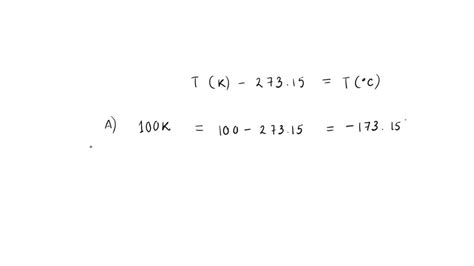Which Of The Following Temperatures Is The Coldest
News Leon
Apr 01, 2025 · 4 min read

Table of Contents
Which of the Following Temperatures is the Coldest? Understanding Temperature Scales and Comparisons
Determining which temperature is coldest requires understanding the different temperature scales and how they relate to each other. This article will delve into the comparison of various temperatures, explaining the science behind temperature measurement and offering practical tips for making these comparisons effectively. We’ll be exploring both common and less common temperature scales to provide a comprehensive understanding.
Understanding Temperature Scales
Before we can compare temperatures, we need to understand the scales used to measure them. The most common scales are:
-
Celsius (°C): This scale is based on the freezing and boiling points of water, with 0°C being the freezing point and 100°C being the boiling point at standard atmospheric pressure. It's widely used internationally and is the standard in most scientific contexts.
-
Fahrenheit (°F): Primarily used in the United States, this scale sets the freezing point of water at 32°F and the boiling point at 212°F. It's a less intuitive scale for scientific purposes due to its arbitrary starting points.
-
Kelvin (K): This is an absolute temperature scale, meaning it starts at absolute zero – the theoretical point where all molecular motion ceases. 0 K is equivalent to -273.15°C or -459.67°F. Kelvin is crucial in scientific calculations and thermodynamics.
Comparing Temperatures: A Step-by-Step Guide
Comparing temperatures from different scales requires conversion. Here’s a systematic approach:
-
Identify the Temperatures: List all the temperatures you need to compare. Ensure you note the units (Celsius, Fahrenheit, or Kelvin).
-
Convert to a Common Scale: The easiest way to compare is to convert all temperatures to a single scale, preferably Celsius or Kelvin. This eliminates any confusion caused by different scale increments.
-
Analyze and Compare: Once all temperatures are on the same scale, simply compare the numerical values. The lowest numerical value represents the coldest temperature.
Conversion Formulas:
- Celsius to Fahrenheit: °F = (°C × 9/5) + 32
- Fahrenheit to Celsius: °C = (°F - 32) × 5/9
- Celsius to Kelvin: K = °C + 273.15
- Kelvin to Celsius: °C = K - 273.15
- Fahrenheit to Kelvin: K = (°F + 459.67) × 5/9
- Kelvin to Fahrenheit: °F = (K × 9/5) - 459.67
Example Comparisons
Let's illustrate with some examples:
Example 1:
Which is colder: -10°C or 20°F?
-
Convert 20°F to Celsius: °C = (20 - 32) × 5/9 = -6.67°C
-
Compare: -10°C is colder than -6.67°C.
Therefore, -10°C is the coldest temperature.
Example 2:
Which is colder: 273 K or 0°C?
-
Convert 273 K to Celsius: °C = 273 - 273.15 = -0.15°C
-
Compare: -0.15°C is slightly colder than 0°C.
Therefore, 273 K is the coldest temperature.
Example 3: A more complex scenario involving multiple temperatures and scales.
Let's compare: -5°F, 255 K, and 10°C.
-
Convert to Celsius:
- -5°F = (-5 - 32) × 5/9 = -20.56°C
- 255 K = 255 - 273.15 = -18.15°C
- 10°C remains 10°C
-
Compare: -20.56°C is the lowest value.
Therefore, -5°F is the coldest temperature.
Beyond the Basics: Factors Affecting Perceived Coldness
While numerical comparisons are essential, other factors influence how cold a temperature feels:
-
Wind Chill: Wind significantly increases heat loss from the body, making a temperature feel much colder than the actual air temperature. Wind chill factors are often included in weather reports.
-
Humidity: High humidity can make cold temperatures feel more penetrating, as moisture on the skin facilitates heat loss.
-
Sunlight: Direct sunlight can warm exposed skin, reducing the perceived coldness.
Practical Applications
Understanding temperature comparisons has numerous practical applications:
-
Weather Forecasting: Accurately interpreting weather reports requires understanding temperature scales and the impact of factors like wind chill.
-
Scientific Research: Many scientific experiments and calculations rely on precise temperature measurements and conversions.
-
Cooking and Baking: Recipes often specify temperatures in different scales, requiring accurate conversions for optimal results.
-
Outdoor Activities: Understanding temperature and related factors like wind chill is critical for safe outdoor activities in cold weather.
Conclusion: Mastering Temperature Comparisons
Determining the coldest temperature among various options involves a clear understanding of temperature scales and the ability to convert between them. While numerical comparisons using a single scale provide a direct answer, it's important to acknowledge that perceived coldness can be influenced by environmental factors. This comprehensive understanding empowers individuals to make informed decisions in various contexts, from everyday life to scientific endeavors. By mastering temperature comparisons, we can better navigate the world around us and make more accurate interpretations of environmental conditions.
Latest Posts
Latest Posts
-
A Long And Branched Chain Of Glucose Molecules Is
Apr 02, 2025
-
What Phase Does The Cytoplasm Divide
Apr 02, 2025
-
A Clique Is A Group Of
Apr 02, 2025
-
Determine The Quantity Of Molecules In 2 00 Moles Of P4
Apr 02, 2025
-
Which Of The Following Compounds Have The Same Empirical Formula
Apr 02, 2025
Related Post
Thank you for visiting our website which covers about Which Of The Following Temperatures Is The Coldest . We hope the information provided has been useful to you. Feel free to contact us if you have any questions or need further assistance. See you next time and don't miss to bookmark.
